Hyundai IONIQ 6 vs Jeep Renegade – Performance, range & efficiency compared
Compare performance, boot capacity, efficiency and price at a glance.
Find out which car is the better choice for you – Hyundai IONIQ 6 or Jeep Renegade?
Costs and Efficiency:
When it comes to price and running costs, the biggest differences usually appear. This is often where you see which car fits your budget better in the long run.
Jeep Renegade has a significantly advantage in terms of price – it starts at 26700 £, while the Hyundai IONIQ 6 costs 37600 £. That’s a price difference of around 10971 £.
As for range, the Hyundai IONIQ 6 performs clearly better – achieving up to 614 km, about 578 km more than the Jeep Renegade.
Engine and Performance:
Under the bonnet, it becomes clear which model is tuned for sportiness and which one takes the lead when you hit the accelerator.
When it comes to engine power, the Hyundai IONIQ 6 has a decisively edge – offering 650 HP compared to 240 HP. That’s roughly 410 HP more horsepower.
In acceleration from 0 to 100 km/h, the Hyundai IONIQ 6 is clearly quicker – completing the sprint in 3.20 s, while the Jeep Renegade takes 7.10 s. That’s about 3.90 s faster.
In terms of top speed, the Hyundai IONIQ 6 performs noticeable better – reaching 257 km/h, while the Jeep Renegade tops out at 199 km/h. The difference is around 58 km/h.
There’s also a difference in torque: Hyundai IONIQ 6 pulls decisively stronger with 770 Nm compared to 240 Nm. That’s about 530 Nm difference.
Space and Everyday Use:
Whether family car or daily driver – which one offers more room, flexibility and comfort?
Both vehicles offer seating for 5 people.
In curb weight, Jeep Renegade is evident lighter – 1420 kg compared to 1850 kg. The difference is around 430 kg.
In terms of boot space, the Hyundai IONIQ 6 offers slightly more room – 401 L compared to 351 L. That’s a difference of about 50 L.
When it comes to payload, Jeep Renegade clearly perceptible takes the win – 570 kg compared to 430 kg. That’s a difference of about 140 kg.
Who wins the race?
The Hyundai IONIQ 6 proves to be outperforms in nearly all aspects and therefore becomes our DriveDuel Champion!
Hyundai IONIQ 6 is the better all-rounder in this comparison.
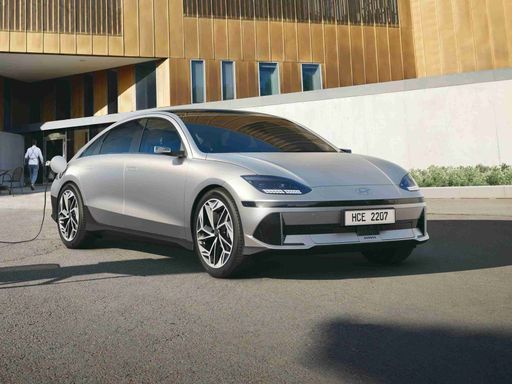 @ hyundai.news
@ hyundai.news
Hyundai IONIQ 6
Hyundai IONIQ 6
The Hyundai IONIQ 6 merges futuristic design with eco-friendly technology, offering a glimpse into the future of electric mobility. Its sleek silhouette and aerodynamic profile are sure to capture attention on the road, while the interior provides a seamless blend of comfort and cutting-edge digital features. With a focus on efficiency and sustainability, this model represents a significant step forward in the evolution of electric vehicles.
details @ hyundai.news
@ hyundai.news
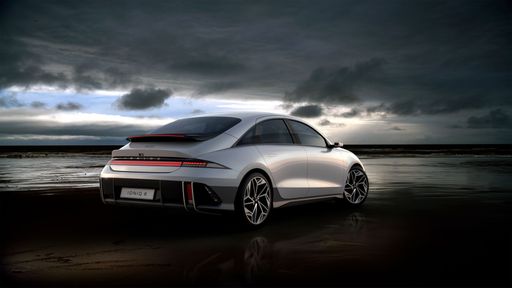 @ hyundai.news
@ hyundai.news
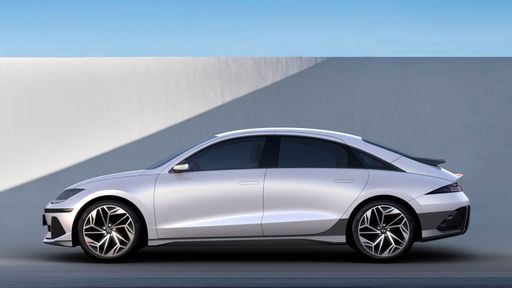 @ hyundai.news
@ hyundai.news
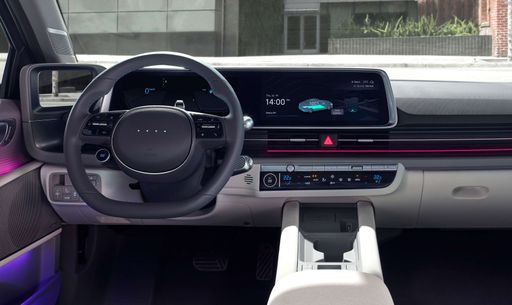 @ hyundai.news
@ hyundai.news
Jeep Renegade
The Jeep Renegade stands out with its rugged design, embodying the adventurous spirit that the brand is known for. This compact SUV offers a comfortable and versatile interior, making it suitable for both city driving and off-road escapades. With its robust performance capabilities, the Renegade ensures a confident and engaging driving experience across diverse terrains.
details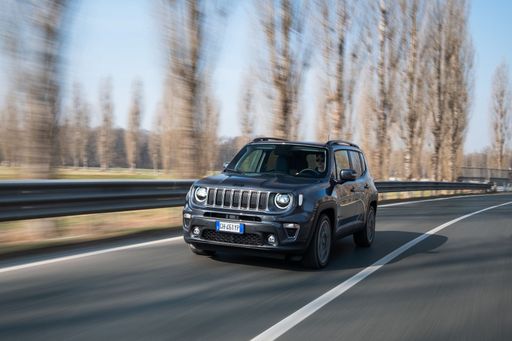 @ media.stellantis.com
@ media.stellantis.com
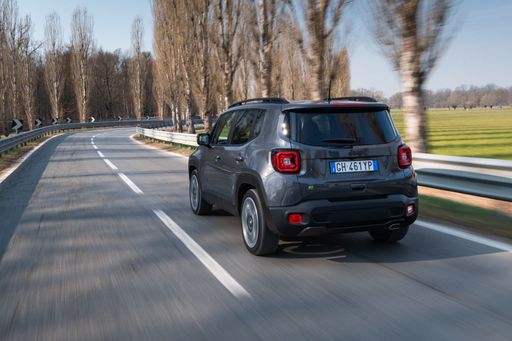 @ media.stellantis.com
@ media.stellantis.com
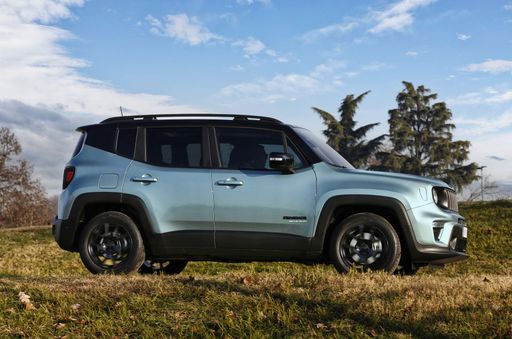 @ media.stellantis.com
@ media.stellantis.com
 @ media.stellantis.com
@ media.stellantis.com
 @ media.stellantis.com
@ media.stellantis.com
 @ hyundai.news
@ hyundai.news
|
 @ media.stellantis.com
@ media.stellantis.com
|
|
|
|
Costs and Consumption |
|
|---|---|
|
Price
37600 - 64300 £
|
Price
26700 - 39200 £
|
|
Consumption L/100km
-
|
Consumption L/100km
2.1 - 5.5 L
|
|
Consumption kWh/100km
13.9 - 15.1 kWh
|
Consumption kWh/100km
-
|
|
Electric Range
429 - 614 km
|
Electric Range
36 km
|
|
Battery Capacity
53 - 84 kWh
|
Battery Capacity
-
|
|
co2
0 g/km
|
co2
48 - 125 g/km
|
|
Fuel tank capacity
-
|
Fuel tank capacity
36 - 48 L
|
Dimensions and Body |
|
|---|---|
|
Body Type
Hatchback
|
Body Type
SUV
|
|
Seats
5
|
Seats
5
|
|
Doors
4
|
Doors
5
|
|
Curb weight
1850 - 2095 kg
|
Curb weight
1420 - 1770 kg
|
|
Trunk capacity
401 L
|
Trunk capacity
330 - 351 L
|
|
Length
4855 - 4935 mm
|
Length
4236 mm
|
|
Width
1880 - 1940 mm
|
Width
1805 mm
|
|
Height
1495 mm
|
Height
1684 - 1718 mm
|
|
Max trunk capacity
-
|
Max trunk capacity
1277 - 1297 L
|
|
Payload
425 - 430 kg
|
Payload
545 - 570 kg
|
Engine and Performance |
|
|---|---|
|
Engine Type
Electric
|
Engine Type
Petrol MHEV, Plugin Hybrid
|
|
Transmission
Automatic
|
Transmission
Automatic
|
|
Transmission Detail
Reduction Gearbox
|
Transmission Detail
Dual-Clutch Automatic, Automatic Gearbox
|
|
Drive Type
Rear-Wheel Drive, All-Wheel Drive
|
Drive Type
Front-Wheel Drive, All-Wheel Drive
|
|
Power HP
151 - 650 HP
|
Power HP
130 - 240 HP
|
|
Acceleration 0-100km/h
3.2 - 8.8 s
|
Acceleration 0-100km/h
7.1 - 9.7 s
|
|
Max Speed
185 - 257 km/h
|
Max Speed
191 - 199 km/h
|
|
Torque
350 - 770 Nm
|
Torque
240 Nm
|
|
Number of Cylinders
-
|
Number of Cylinders
4
|
|
Power kW
111 - 478 kW
|
Power kW
96 - 177 kW
|
|
Engine capacity
-
|
Engine capacity
1332 - 1469 cm3
|
General |
|
|---|---|
|
Model Year
2022 - 2025
|
Model Year
2024
|
|
CO2 Efficiency Class
A
|
CO2 Efficiency Class
D, B
|
|
Brand
Hyundai
|
Brand
Jeep
|
What drive types are available for the Hyundai IONIQ 6?
Available configurations include Rear-Wheel Drive or All-Wheel Drive.
The prices and data displayed are estimates based on German list prices and may vary by country. This information is not legally binding.
